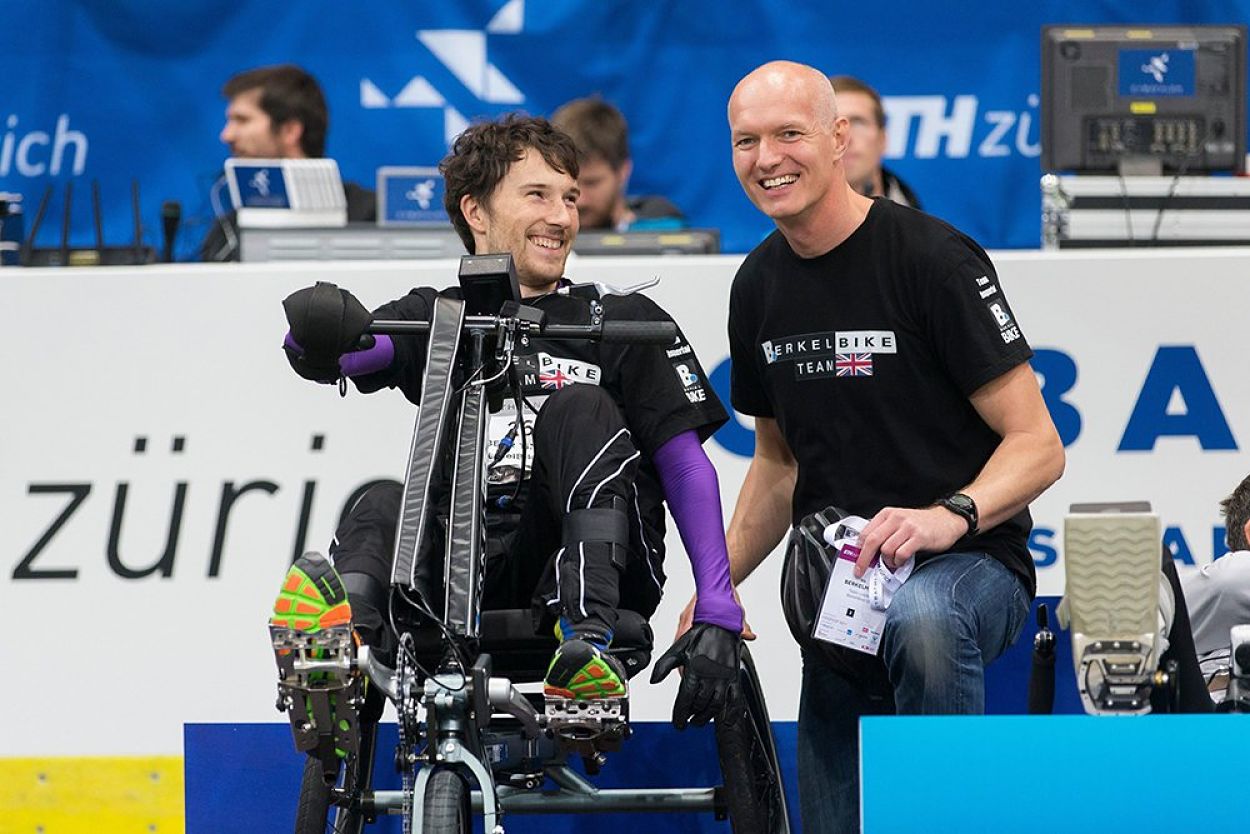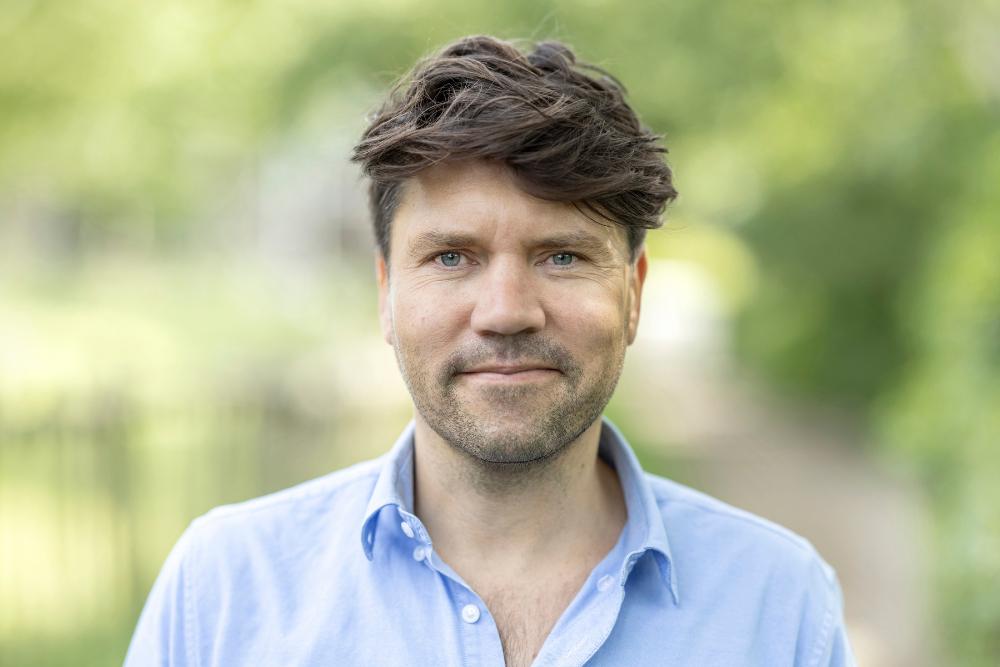People with a spinal cord injury are often faced with a dreadful reality: a burning desire for exercise, but an inability to do so. Determined to make a change, VU alumnus Rik Berkelmans (48) designed the BerkelBike.
How did you get the idea to design these bikes?
“I am fascinated by the human body. How do our bodily processes work? And how can they be influenced? I’ve always been an athlete myself, which sparked an interest in how you can optimise and affect your body’s performance, even when things go wrong. That is why I decided to study Human Movement Sciences. During my studies, I found myself reading an article on spinal cord injuries, which explained how our muscles are stimulated with electrical impulses. I never forgot that article and, ultimately, that’s where the seed for the bike was planted.”
Why is it so important?
“Exercise is tremendously important for everyone. A lack of exercise can have enormous consequences: it can lead to a decrease in muscle mass and worsened physical condition, of course, but also increases the chances of cardiovascular disease, diabetes, thrombosis and bedsores. That is no different for people with a spinal injury. Currently, bedsore prevention mainly revolves around reducing pressure: patients should avoid putting pressure on their skin and are surrounded with soft pillows and cushions to reduce the risk of bedsores.
Increasing resilience, however, is more important. Some cyclists can spend up to three weeks cycling for six hours a day, sitting on a rock-hard saddle, but they never develop bedsores, because they have muscle mass and good circulation. The same happens when people with a spinal cord injury start cycling. It has been shown to work: all patients involved experienced a considerable increase in muscle mass and substantial improvements in their physical condition."

Rik Berkelmans
How does it work?
“We use a system to simulate the movement impulse that is usually transmitted by the brain. The bike features sensors that communicate the position of the rider’s legs to the computer, which calculates which muscles should be activated when and generates a sequence of brief but powerful electrical pulses, activating the motor nerves that lead to the muscle and causing the muscle to contract. If you stimulate the right muscles at the right time, you can get the legs to move."
How have people responded?
“My favourite part is when I see people start smiling again. Sometimes, I’ll have to tell people that they really need to take a break after 30 minutes, because they just want to keep going. It can mean so much for people. A while ago, I heard about a professional gymnast who had suffered a high spinal cord injury. He was able to exercise, but all the adjustments required meant it did not satisfy him at all, having been an elite athlete for so long. Ultimately, he opted for euthanasia. I simply heard about him too late. Those stories really affect me, I would have loved to help someone like that. Sometimes, it frustrates me that this technology isn’t available for everyone. Although I’d never say that everyone has to try it, it should definitely be possible for everyone.”
Which reactions are the most touching?
“Only last week, I met a 19-year-old guy. He used to be a keen BMX rider, but suffered a spinal cord injury after a motorcycle accident. He showed me videos of him doing backflips and pirouettes, It was clear that he missed it a lot. After his first session on the BerkelBike, he told me that it was the first time he’d experienced the thrill that riding his BMX used to give him. That really touched me.”
You also work with the VU Pulse Racing Team. What’s that?
“It’s a racing team that was set up by students of Human Movement Sciences. In fact, it’s quite similar to Formula 1. The riders all have a spinal cord injury and all the mechanics are students, who work on the bike, the electronics and help train the rider. If all goes well, this team will win the 2020 Cybathlon in Zürich.”








